Feb 21, 2021 | Delwin Fiddler, Jr
In my ancestors' time, the Wanietu Iyawapi or Winter Count was how we recorded our history from "first snow winter to first snow winter." The Winter Count was the way we passed down our history from one generation to the next. This practice was different for different tribes, although most Native people painted on hides, which they used as clothing, shelter, and ceremonial objects. Tribal members painted with personal colors and symbols. The Lakota, Cheyenne, Arapaho, Kiowa, and Blackfoot all created Winter Counts as part of their cultural ways. We painted our stories on hides using pictures and symbols because there was no written language in the old days.
It was a great honor to be chosen by the community to record the Winter Count because this was the history of the tribe to be handed down to the next seven generations to come. Elders, who were usually the storytellers of the tribe, were almost always chosen to record and select the one event representing that year in the Winter Count. The event became central to the Winter Count—drawn at the center of the piece. Additional pictures would follow in a spiral, starting with the main event and then continuing in chronological order, earliest to latest, as the circle grew outward.
The Winter Count was a social time for families to come together, share food, stories, and remembrances of the past year. All births and deaths, significant battles, weather, stars/sky events, harvests, meetings, and personal stories from the past year were shared and recorded at this time. Everyone in the tribe contributed. Additionally, a member of the tribe read the Winter Count from the previous year to remember and pass down the history.
It saddens me a bit that this tradition is a thing of the past. Today, we all have smartphones with which we take pictures and videos. So many of the youth believe there is no need for the old ways anymore. When I grew up on the reservation, my relatives always shared music and songs, and they told the stories. When I was very young, there was music in the house from sunup until sundown. Modern-day music that my folks liked would later give way to the old songs that the elders remembered. Elders told stories over and over so no one would forget. The elders wrote Lakota words for us to practice every day. Their dedication is why our elders are revered. They always remembered and retold the stories and tried to teach us everything they knew about our culture.
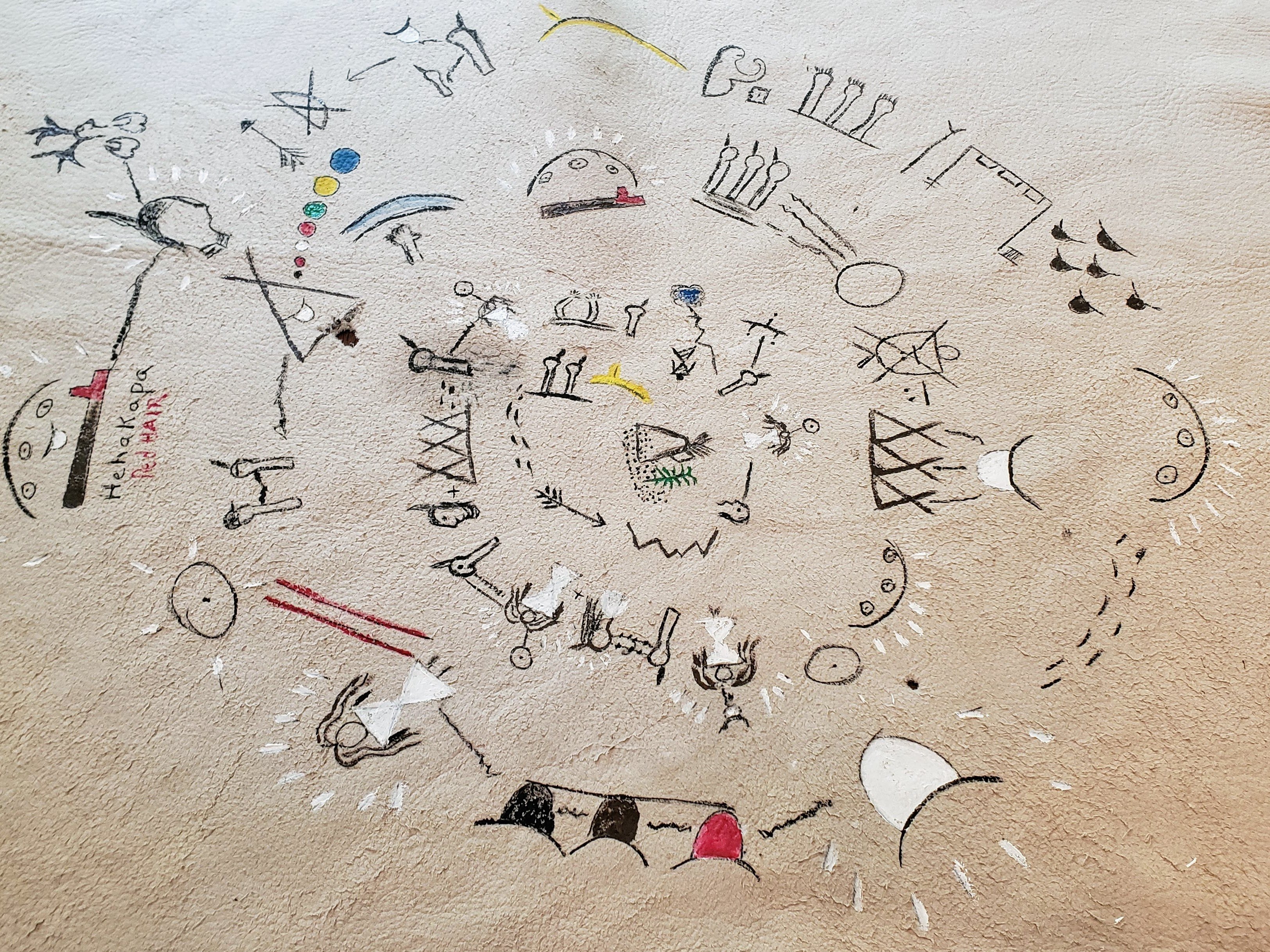
Last year, my friend Maria helped me create a Winter Count that reflected the White Buffalo Calf Pipe Woman's story, which relates to my family history as Keepers of the Pipe. We illustrated how the Sacred Pipe came to the people and the values for living. We show how my Grandfather, Elk Head, Red Hair passed down his medicine to our family tree. We used traditional Native Indian symbols, the way the Ancestors would have, sketched with pencil and then filled in with paint.
When I go into schools to teach about our history, I take this Winter Count as an illustration. It is my way to honor my ancestors who still walk with me. Part of the struggle today is many youths grow up without any of this traditional knowledge depending upon their situation. Those who hear a story from an elder or grandparent may only hear a story, but it was a way of life for the elder.
As a traditional dancer, participating in numerous powwows over my 42 winters, I realize that a powwow is much like a living Winter Count. All tribes hold powwows annually to share their traditions through songs, dances, and regalia they wear.
To explain a little, at a powwow gathering, the announcer will share the day's order; the crier will share the current news events happening in the tribe and share the knowledge of certain songs or dances.
He will also tell stories and jokes to create positivity among relatives and visitors. Like a Winter Count, the powwow promotes conversations among the people about the past year. There, people enjoy themselves and food like Indian tacos. It also allows them to share stories with non-native people who come to a powwow to learn and experience Native culture.
Most of the time, the Staff Carrier is an elder and comes into the circle to remind the people we are still here, and we must remember our ancestors and our traditions. Native Veterans carry the flags of their nation into the powwow circle; they do so to honor the men and women serving in the U.S. military—the modern-day warriors. Then the dancers come in, elders, adults, and teens, creating the powwow circle just like the Winter Count's Spiral.
The dancers display their individual stories on their regalia. Some of their clothing is passed down from generations before; they carry their ancestors' medicine into the spiral. When the announcer gives the dancers' categories and the performances start, it's a good time for all. Native people often recall when others from their communities danced to the same, memorable songs. Each song and dance holds so much history and knowledge—delivering healing and blessings to the people. The powwow drum itself is considered the heartbeat of Unci Maka—Grandmother Earth.
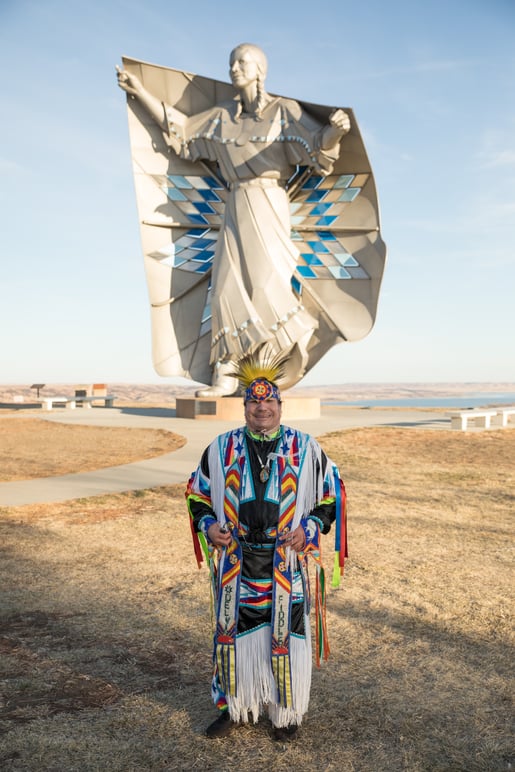
The powwow is the closest thing to the Winter Count today. Native people, young and old, continue to gather at powwows each year to remember our ancestors' ways. This is how the next generation, even the little ones, can learn and feel the prayers of the people and experience their Native culture.
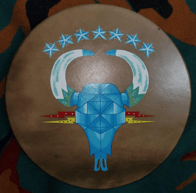 As Native people, we still use symbols and pictures to represent our tribe and tribal lands. I believe it is in our DNA to do so. The items we carry, such as shields, drums, and medicine pouches used in ceremonies, painted with symbols and colors in tune with our medicine, are traditional. Beadwork designs show our tribal roots and help others recognize where we originate on Turtle Island (North America).
As Native people, we still use symbols and pictures to represent our tribe and tribal lands. I believe it is in our DNA to do so. The items we carry, such as shields, drums, and medicine pouches used in ceremonies, painted with symbols and colors in tune with our medicine, are traditional. Beadwork designs show our tribal roots and help others recognize where we originate on Turtle Island (North America).
In modern times, we continue - as best we can - with love, knowledge, and sharing at the center of all we do. We are all called to be witnesses for the next generation. To teach them to connect to the "then" and the "now" with good medicine. Wopíla Tanka. Hehakapa Mahto (Elk Bear)
Please help us raise awareness by sharing this story and the story of Native Hope with your friends and family! When you support Native Hope, you are investing in giving HOPE to the voices unheard.
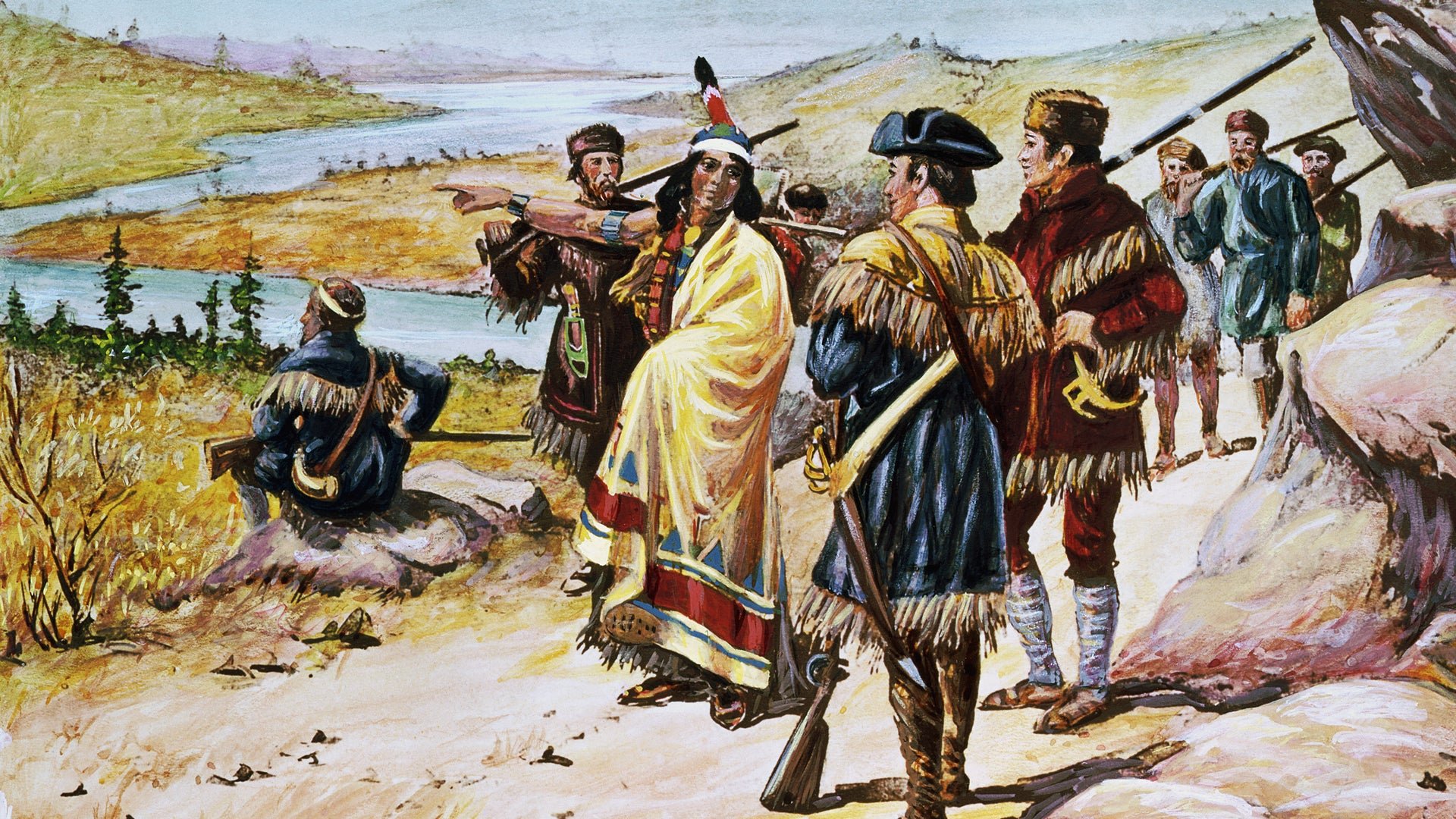
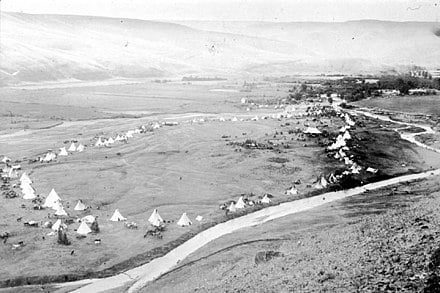

COMMENTS